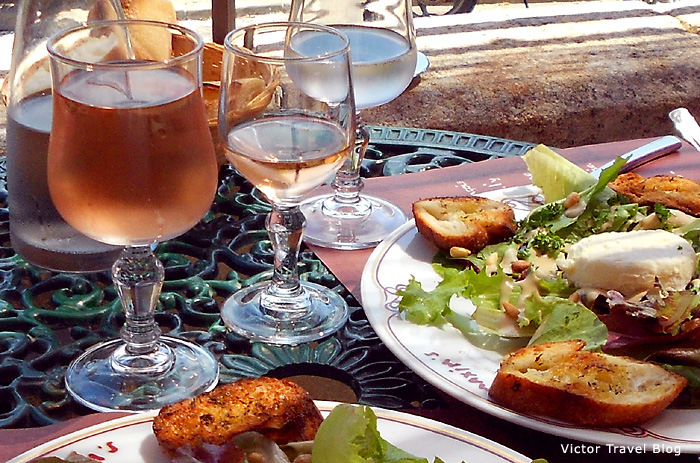“I am in Aranmor, sitting over a turf fire, listening to a murmur of Gaelic that is rising from a little public-house under my room.”
― J.M. Synge, The Aran Islands
Each year as St. Patrick’s Day approaches, I resolve to be strong and refrain from hectoring my readers about the cultural futility of green-dyed beer. Each year, perhaps ingloriously, I fail, and yet at times, failure is something to be embraced.
Now and in time to be,
Wherever green is worn,
Are changed, changed utterly:
A terrible beauty is born.
William Butler Yeats wrote the poem Easter, 1916 as a personal response to his mixed feelings in the aftermath of the Easter Rising, which set into motion a chain of events culminating in the establishment of an independent Irish Republic.
Obviously there is far greater depth to Irish history than just these tumultuous events more than a century ago, and although millions of Americans can trace their lineage to Ireland, neither they, nor the millions of others who celebrate Ireland each year on St. Patrick’s Day, can be relied upon to have studied the topic altogether deeply.
Not should they; after all, they’re Americans now, and in some cases they’ve been Americans since coming here during the decades prior to the Civil War, when the Irish diaspora was launched in earnest amid the tragedy of the Great Famine.
“I had a very happy childhood, which is unsuitable if you are going to be an Irish writer.”
― Maeve Binchy
The Irish themselves display remarkable equanimity as it pertains to the typical excesses of our planet’s wacky St. Patrick’s Day observances, not all of which correspond very closely to the realities of Irishness. As an example, there is a consideration of consonants.
Paddy is derived from the Irish, Pádraig: the source of those mysterious, emerald double-Ds. Patty is the diminutive of Patricia, or a burger, and just not something you call a fella. There isn’t a sinner in Ireland that would refer to a Patrick as “Patty”. It’s as simple as that.
In short, it’s St. Paddy’s Day, if one is prone to abbreviation.
Concurrently, each and every day of the year save one, the term “green beer” is used by brewers to describe a product not yet fit for consumption by humans. Give a young “green” batch of beer ample time to mature, and the effects will be considerably happier.
Far better for St. Patrick’s Day revelers to drink a jar of the black gold, otherwise known as Guinness Stout (or another brand of the stout genre). It’s a light-bodied dark ale with far fewer calories than might be imagined, but if a mix is desired, request a half-and-half (layered with Smithwick’s Red or Harp Lager) rather than a “black & tan,” as the latter term describes infamous paramilitary vigilantes during Ireland’s bloody civil war.
The same respect for history applies to the unfortunately labeled “Irish Car Bomb,” which not unexpectedly originated right here in America. Boston-based bartender Haley Hamilton explains.
Look, I get it: It’s just a drink. But here’s the thing: Unless you crawled out from under a rock yesterday or have zero working knowledge of either 20th-century European history or the English language, you know it’s at the very least a disservice to the Irish culture you claim to be celebrating on St. Patrick’s Day, if not downright offensive. You wouldn’t order a suicide bomb on the Fourth of July, or a pulse shot during Pride, right? So it is with the Irish car bomb: It’s an insensitive and traumatic reminder of a dark and painful period of Ireland’s national history.
Preferred St. Patrick’s Day cuisine, specifically corned beef and cabbage, also cannot elude scrutiny. Sorry; not sorry.
In 2020 the escalation of COVID-19 felled most St. Patrick’s Day celebrations. Last year there was a sense of approaching “normality” to the holiday, albeit with restrictions still in place. Today the pandemic may or may not be waning, depending on which news channel one trusts; unfortunately in 2022 international celebrations of Irishness will occur against a tragic backdrop of needless war in the Ukraine — and yes, there are perhaps a dozen Irish pubs in Kiev.
“I resent violence or intolerance in any shape or form… It’s a patent absurdity on the face of it to hate people because they live around the corner or speak another vernacular, so to speak.”
― James Joyce, Ulysses
But Ireland and the Irish are long accustomed to making the best of inopportune situations. Now more than ever, the traditional Irish toast is relevant: Sláinte (SLAHN-chə), taken as “good health” in English, and derived from the Gaelic word slán, meaning “healthy” or “safe.”
The following commentary remains my favorite view of St. Patrick’s Day from the service industry’s perspective. It originally was penned 20 years ago by a witty East Coast bartender named Chris Halleron, for an e-newsletter called “Hot Trub.” He granted me permission to reprint his words in perpetuity, and I’m determined to keep them alive for posterity.
Some references are dated, but in the main Chris’s commentary has remained remarkably accurate. In the past I’d read it, dissolve into laughter, and resolve to stay home throughout the day to avoid the mayhem inflicted by “green” amateurs.
In 2022, if I belatedly decide to toddle down the street to my favorite local pub, it will be with a mask covering my mouth and a song in my heart, probably by Fontaines D.C.
—-
Erin Go Blah
Recently a friend asked if I was free to do something on St. Patrick’s Day, but I explained that asking a bartender to take that day off is like asking an accountant to blow off work on April 14.
It is the busy season for bartenders, when we get to see all those cheapskate rookies who haven’t spent a dime in the bar since they threw up in the corner on New Year’s Eve but now decide to poke their heads out of their holes and celebrate the Feast of St. Patrick.
While most people celebrate St. Patrick’s Day on March 17, where I come from it seems to last longer than Mardi Gras in N’Awlins (coincidentally, that’s also taking place right now). Hoboken, New Jersey, where I tend bar, has its parade the first Saturday of March every year, so as not to compete with the mega-parade across the Hudson in Manhattan on the actual St. Patrick’s Day.
Other communities in New Jersey spread their celebrations out in the interim, creating one thick fog of overindulgence week after week until finally the corned beef and cabbage comes out and everybody is too sick to eat it.
Normally I’d be all for such a celebration, but for the fact that somebody has to work these things — and once again that somebody is me. While I’m surely preaching to the choir with this column, I’d like to share some misconceptions and social faux pas regarding St. Patrick’s Day that I’ve had the displeasure of observing over years:
· “Kiss Me I’m Irish” buttons will get you nowhere with the ladies.
· There is no “Official” Beer of St. Patrick’s Day. Despite all its recent financial difficulties, the Catholic Church has yet to seek corporate sponsorship of its saints’ feast days (though it may only be a matter of time…)
· The same goes for “Official” St. Patrick’s Day Headquarters–as if that stinky dive down the street with the broken urinal would actually be the epicenter of the world’s St. Patrick’s Day celebration.
· Just because Mario’s Bar and Grill has a shamrock in the window, it doesn’t necessarily make it an Irish bar.
· In most circles, House of Pain’s “Jump Around” is not considered traditional Irish music.
· Ask any brewer and they’ll tell you — when a beer turns green it’s a BAD thing.
· Killian’s Irish Red is made in Golden, Colorado, not Enniscorthy, Ireland.
· Killarney’s is from St. Louis, Missouri, not Killarney, Ireland.
· The number-one selling lager in Ireland is Budweiser.
· Guinness is most certainly not a microbrewery (I can’t make this stuff up — I swear I actually heard someone say that once).
· Asking a bartender to put a shamrock on the top of a well-poured Guinness is like asking Da Vinci to put a mustache on the Mona Lisa.
· Not only is the “Irish Car Bomb” (a pint glass half full of Guinness with a shot glass of Bailey’s and Jameson dropped in) an appalling name for a drink, the waste of Guinness and Jameson in some novelty shooter is nothing short of blasphemy. Save the “Boilermakers” for the Milwaukee’s Best and enjoy a quality beverage the way it’s meant to be enjoyed.
· A pint of Guinness takes a while to be poured properly — if you’re in a hurry then order something else.
· Guinness in a plastic cup is a travesty, no matter how busy the bar is.
· The plural of Guinness is Guinness, not Guinnesses.
· More often than not, Irish people (by that, I mean people born and raised in Ireland) couldn’t give a rat’s arse what town your great-great-great-great-great-great-great-great-great-great-grandfather left during the Potato Famine.
· There is no room for a discussion of Irish politics in a crowded bar.
· The stereotype of drunken Irish bar-fighters applies mostly to Irish-Americans.
· The Irish pastime of hurling is not what most people in this country think it means.
· No matter what you may have heard or read, a traditional Irish breakfast DOES NOT consist of a six-pack and a potato.
· No, I’d rather not wear a silly plastic green hat while I’m working, but thanks for the offer.
· There is no “siesta” napping on the bar for St. Patrick’s Day — you have that confused with Cinco de Mayo, which is two months away.
· Just because the bar is open all day and all night doesn’t necessarily mean you have to be there drinking the whole time.
· Just because you gave me a big tip doesn’t give you carte blanche for being an @$$hole!!!
Despite all my bitches, gripes and complaints, I’m well aware that there’s a lot of earning of the green that goes along with the wearing of the green. So it looks like I’ll once again have to “Er-Grin ‘n’ Go Bear-it” as I look forward to the pot o’ gold at the end o’ me rainbow — the long, messy rainbow that it is.
In the meantime, may the road rise to meet the rest o’ ye, and Sláinte … from the bitter bollocks behind the bar.



















 Roger Baylor is an entrepreneur, educator, and innovator with more than 35 years of hands-on experience and expertise as a beer seller, restaurateur, and commentator. As the co-founder of New Albany’s Sportstime Pizza/Rich O’s Public House (which later became New Albanian Brewing Company) in the 1990s and early 2000s, Baylor played a seminal role in Louisville’s craft beer renaissance. Currently he is the beer director at Pints&union in New Albany. Baylor’s “Hip Hops” columns on beer-related subjects have been a fixture in F&D since 2005, and he was named the magazine’s digital editor in 2019.
Roger Baylor is an entrepreneur, educator, and innovator with more than 35 years of hands-on experience and expertise as a beer seller, restaurateur, and commentator. As the co-founder of New Albany’s Sportstime Pizza/Rich O’s Public House (which later became New Albanian Brewing Company) in the 1990s and early 2000s, Baylor played a seminal role in Louisville’s craft beer renaissance. Currently he is the beer director at Pints&union in New Albany. Baylor’s “Hip Hops” columns on beer-related subjects have been a fixture in F&D since 2005, and he was named the magazine’s digital editor in 2019.


